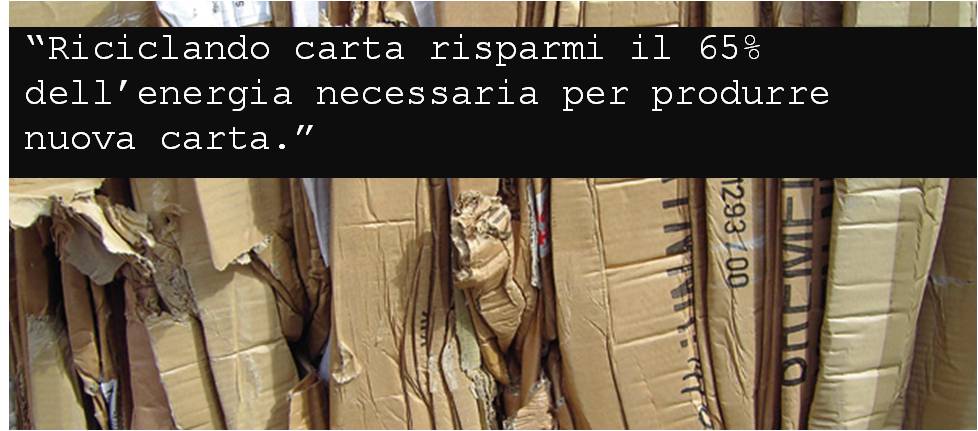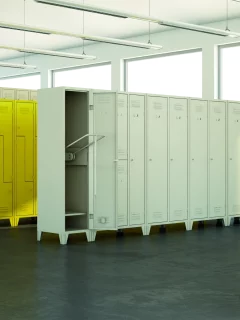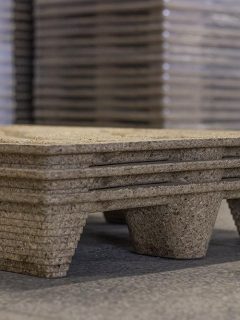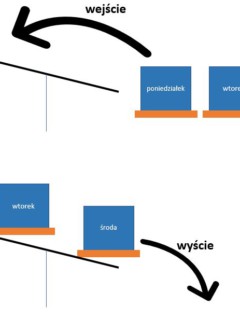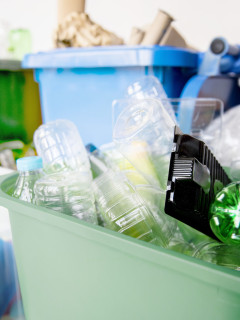Some figures that make recycling worthwhile.
Environmental protection is increasingly at the heart of the policies of governments, industries and companies.
It is becoming increasingly evident that recycling on a large scale is crucial for developing a more sustainable lifestyle.
More and more homes and offices have recycling bins for paper and cardboard.
Sometimes, however, you wonder whether recycling a scribbled sheet of paper or an oddly shaped envelope can make a difference.
Here are some figures that may prompt you to sort all your sheets of paper or cardboard scattered around.
Paper consumption in figures
- paper consumption worldwide is on the rise.
- According to data from the Bureau of International Recycling (BIR), Italy consumed almost 11 million tonnes of paper in 2010. Not exactly a pittance considering that we were ahead of Spain, Holland and Great Britain in the ‘ranking’.
- Companies in the US generate enough paper to wrap the whole world about 20 times over.
- Paper production uses about 12% of all energy used in industry.
- Almost half of all printing and photocopying is thrown away every day.
- Per capita paper consumption for each European or American individual is about 200 kg each year.
Paper Recycling
– Only 50% of the paper produced each year is recycled
– Recycling paper saves 65% of the energy needed to produce new paper and reduces water pollution by 35% and air pollution by 74%.
– For every tonne of paper recycled, 17 trees are saved.
– Paper from offices is recycled into cloth napkins, toilet paper and paper.
– In 1993, paper recovery in the United States saved over 90 million cubic metres of landfill space.
How is paper recycled?
The transformation of waste paper into raw material requires several steps:
- Collection and storage;
- Sorting, to separate usable fibre from impure materials, which are normally incorporated in bales of waste paper, and to separate the different types of waste paper. The technical and economic value of the material increases the more defined the sorting by type and quality: usually the sorting process is mechanical, a more thorough sorting must be performed by hand, running the paper over a conveyor belt, with manual operators sorting it by type;
- Pressing and binding into bales; these, sent to the paper mills, undergo the actual recycling process;
- Shredding;
- Bleaching to remove inks; Deinking;
- Reduction to a pulp with the addition of hot water;
- Refining: impurities and slag are removed from the pulp until the pulp is separated;
- Addition of virgin pulp, in different proportions depending on future use.
At this point in the cycle, the cellulose contained in the waste-paper is again a raw material ready to re-enter the production cycle.
The so-called ‘paper machine’ finally spreads, dehydrates, and presses the pulp, passing it through various rollers, until it is finally wound into reels, to be sent to the paper mills, where the paper is further processed to obtain new packaging and finished products.
Practical guide to recycling
You can recycle:
- Office paper
- Newspapers
- Magazines
- Brochures (small)
- Envelopes (without windows)
- Flyers
You cannot recycle:
- Wallpaper
- Wrapping paper (if it is not pure paper, e.g. has glitter or is partly made of a plastic material)
- Shredded paper
- VCI anti-corrosive paper
- Paraffin-coated kraft paper
COMIECO
According to Ignazio Capuano, president of Comieco (National Consortium for the Recovery and Recycling of Cellulose-based Packaging), separate waste collection must be supported and enhanced.
For this reason, Comieco has set up a special desk with Ancitel, providing small and medium-sized municipalities with technical support and economic resources.
In2014, in fact, more than 100 municipalities were granted funding – 84% in the southern regions – for a total of around 2 million euros, which will be used to purchase equipment to enhance separate waste collection such as bags, bells, bins.
_Sources_
http://www.rajapacktoday.co.uk/recycling-paper-facts/
http://it.wikipedia.org/wiki/Riciclaggio_della_carta
http://www.societing.org/2012/04/quanta-carta-consumiamo-ogni-anno-siamo-tutti-dei-taglialegna/
http://www.bir.org/industry/paper
http://www.forestethics.org/paper-the-facts
http://earthecho.org/news/did_you_know_some_interesting_facts_about_the_environment
http://www.environmentalpaper.eu/paper-facts/
http://www.recycling-guide.org.uk/facts.html
http://www.usi.edu/recycle/paper-recycling-facts
http://www.recyclenow.com/facts-figures/how-it-recycled/paper;
for images:











